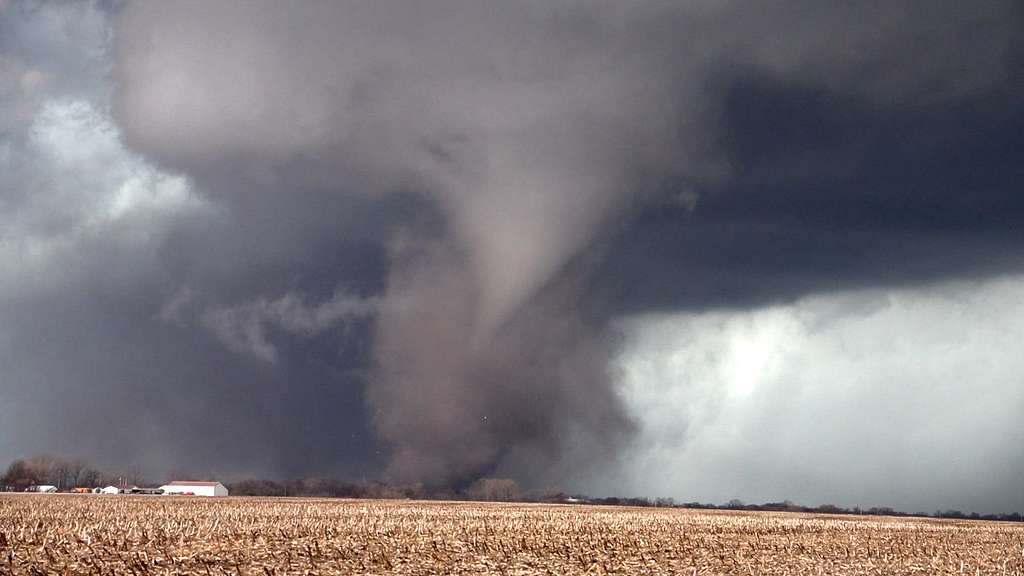It’s spring 1996 — the world is churning with excitement for the upcoming Euros and Olympics, dungarees or overalls represent the height of fashion, and the Spice Girls are months from becoming a household name. The film “Twister” — depicting the ravages of climate change — has also just hit theaters, starring contemporary A-listers Helen Hunt and Bill Paxton as ‘storm chasers’ tracking a cataclysmic tornado.
Making a villain out of a climate disaster was certainly ahead of its time, as were the special effects, which ripped trees from the ground and sent houses (and cows) flying. And, despite the inaccuracies and clichés of disaster movies, Twister’s ecological premise still resonates today — so much so that the sequel, “Twisters,” is due for the big screen this Friday. This marks one of the longest gaps between an original movie and its sequel in Hollywood history.

Naturally, the sequel wraps climate change into the plot. As screenwriter Mark Smith explained: “Because of climate change, what used to be tornado alley going through a certain stretch now extends so much further east, and it’s moving across, and the dates are wider, and the numbers are higher, and the storms themselves are more violent. So, we did use elements of that just to shine a light on it, as well, the causes and effects of climate change.”
The film has the makings of a summer blockbuster with mind-blowing special effects and rollercoaster pacing. But, these thrills envelop an important message about climate change, and how it can ravage our world. This is profound for anyone concerned about sustainability and net zero.
There’s no shortage of news about the worsening climate crisis, but statistics and facts have their limits. Films like this, which create an immersive and intense experience, relate the consequences of climate inaction to a general audience. As the golden rule of writing goes: show, don’t tell.
I hope this trend continues. From “Day After Tomorrow” to “The End We Start From” we’re increasingly seeing climate narratives climb out of academic publications and into Hollywood scripts.
Connecting the silver screen to reality
While audiences love the drama of saving the planet, the idea of sustainability goes beyond survival. It aims to shape a better, healthier, and more equitable world for all.
In disaster films, the savior solution is often a new, untested piece of science. Think of Virgil, which drilled to the center of the earth in the movie “The Core,” or Icarus II, tasked with reigniting the sun in “Sunshine.” But in real life, the technologies needed to avert climate disaster are already here — and they’re proven, scalable, and rapidly maturing.
To move toward a more sustainable future, companies must now implement them on a large scale and in unison. Electrification, for example, holds the potential to transform the industry sector — with the transition to electric vehicles, heat pumps, and electrified industrial processes all important checkboxes on the way to net zero.
Businesses should also be keen to embed sustainable principles into growth strategies. This isn’t just to prevent financial loss, it’s proven to fuel growth and profitability while driving innovation and futureproofing businesses. Extensive research from McKinsey underlines this.
By integrating more renewable energy and digitalization, a clear path to decarbonization opens. The synergy of electrification and digitalization could squash emissions by up to 70%. That will go a long way in ensuring mega disasters stay on the silver screen only.
Politics vs climate change
Real impact needs a unified political effort across the world. There’s a classic Hollywood scene where, when confronted with a global threat, countries lay down their differences and cooperate for the earth’s survival. That needs to happen now. Luckily, this year presents a watershed opportunity for change, with national elections due in 64 countries and the EU, totaling nearly half of the global population. The outcomes of these elections will set the trajectory for years to come.
Encouragingly, surveys in the EU reveal widespread public support for climate action, with sustainability topping the list of voter concerns. If Hollywood keeps spreading awareness about these issues, and politics amplifies the voice of the people, perhaps we could see a surge in climate initiatives.
A crisis that won’t blow over
Europe has the chance to address its energy crisis decisively and collectively, paving the way for a smoother journey toward net-zero. This is not a challenge for the distant future; it requires urgent attention. Unlike the 28-year wait for the sequel to “Twister,” action on the climate crisis cannot be delayed.




Add a comment